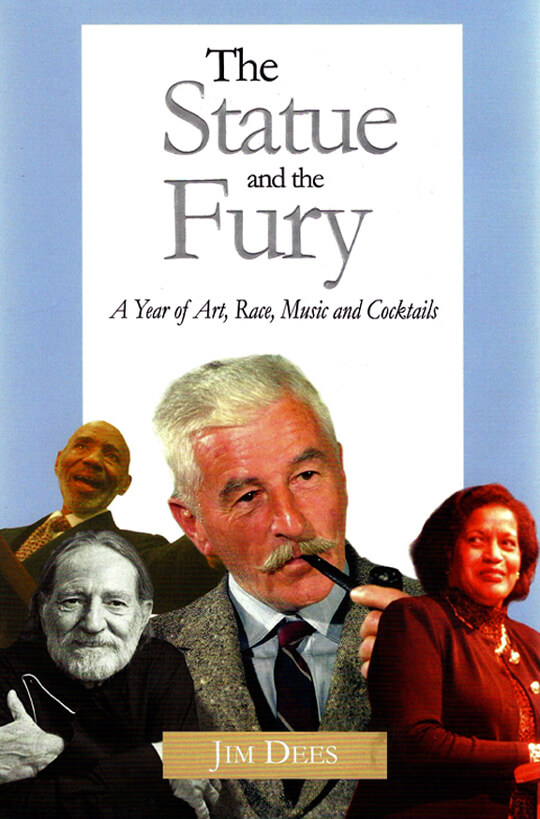I really wanted to like this book, I really did. I was hoping that Dees had matured since publishing Lies and Other Truths (Jefferson Press, Oxford; 2008) an ill-advised assortment of self-absorbed musings, and The Statue and the Fury (Nautilus Press, Oxford) does have an initial premise of objectivity, but this grounding proves to be nothing more than jumping-off point for another lengthy exercise in self-indulgence. The Statue and the Fury could well be described as a roman à clef with no need for a key, since the names come one after another rat-a-tat-tat like a perfunctory roll call of characters, encompassing everyone of note in Oxford during the late 1990s and many who are still there.
In reporting on the tempest in a teapot created over cutting a magnolia on the Oxford Square to make way for a statue, the only character that gets more play than Jim Dees is William Faulkner, said statue subject, who figures prominently on the cover in the company of Willie Nelson, James Meredith, and Myrlie Evers below a vermeil title in a clumsy Monty Python-esque montage. We shouldn’t find this depiction surprising, since Faulkner is Oxford’s most important asset aside from the University of Mississippi, and the others are of course Mississippi icons in their own right, even Willie. Dees goes so far as to share his thoughts on Faulkner’s works in a Catherine’s wheel of maritime metaphors, including, “I would direct first-time readers to the novellas in Go Down, Moses or the Snopes trilogy, or, to dip your toe gently in the Faulkner sea, page-turners like Intruder in the Dust or As I Lay Dying.” Not, perhaps, the most perceptive advice, but then Dees with uncharacteristic modesty admits that he is “not any kind of Faulkner know-it-all”. (Indeed.)
Dees can be engaging on air as well as in person (provided you’re not on the wrong side of his toxic wit), but while his writing displays a formidable command of the first person singular, its sardonic tone is rarely laugh-out-loud funny, even when describing events fraught with high comedy such as Pizza Bob on the witness stand. In short, the entire work concerns nothing more than a “You had to be there” sort of situation in a feeble attempt at gonzo journalism and the title is either an ill-advised tongue-in-cheek pun or a painfully fumbled riff on Faulkner (six of one, half a dozen of the other). Dees’ Lies and Other Truths as well as They Write Among Us (Jefferson Press, Oxford; 2003) to which he wrote the introduction, both sold out, and it’s certainly likely that unless an unrealistic number of copies were printed The Statue and the Fury will as well, particularly if everyone mentioned buys a copy.
By dint of his gig as host of “Thacker Mountain Radio”, which no less than Dees himself refers to as the “Grand Ole Opry of literature”, Dees has become a media figure. Given his unremarkable publishing history, what we’re left with in The Statue and the Fury is an example of marketing based on the appeal of personality; in a sense, buying Dees’ book is somewhat the Mississippi equivalent of buying that collection of Kim Kardashian’s selfies. If you are a fan of Jim Dees, you will certainly find this book worth every penny, and if you lived in Oxford during the ‘Nineties, even if you’re not mentioned, you might buy it, too, but sooner or later it’s bound to be available at your local library.


Who published it?
I added the publisher.